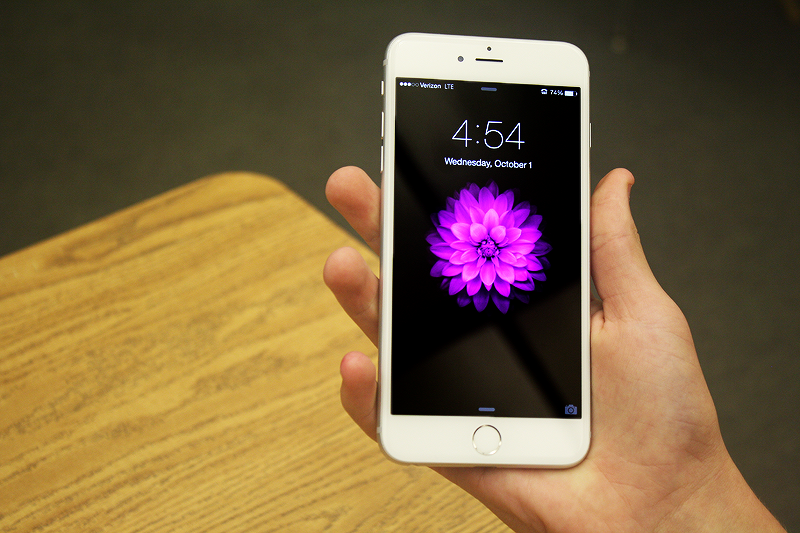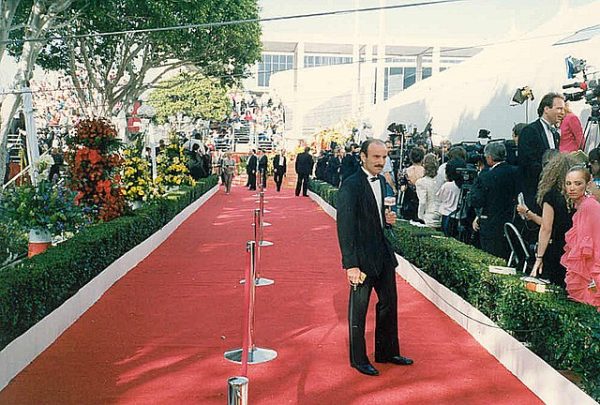iPhone 6 vs. Samsung Galaxy S5 Review
October 1, 2014
These days, people’s cell phones are becoming more and more of an extension of themselves, their personality, and their productivity. So when choosing a phone in this rapidly changing market, one would want to make sure that they make the right decision to fit their specific needs and desires. The iPhone and the Samsung Galaxy are among the best smartphones out there today. The iPhone is more geared toward the casual technology consume, mainly to make life easier. The Samsung Galaxy, on the other hand, is more suited for the techy kind of person who is looking to use their phone in most aspects of their life.
On Sept. 9, Apple announced its heavily anticipated iPhone 6. The iPhone was released on Sept 19, with pre-orders being taken on the twelfth. This year’s model will introduce a plethora of new features; from the innovative NFC Chip, which allows the user to pay in stores without using their credit card, to the much faster 64-bit A8 processing chip.
The iPhone 6 is being released in two different sizes, the regular one with a 4.7-inch diagonal screen and the iPhone 6 Plus which will have a 5.5-inch diagonal screen. The larger version is challenging the screen size of Apple’s biggest competitor, Samsung, with their Galaxy S5 which has a 5.1-inch display. Some people argue that Apple’s 5.5-inch model might be a bit too big for their content. As of now, it looks like the 4.7-inch iPhone may be the more popular product according to TechSmartt.net.
When you compare Apple’s new product to Samsung’s highly acclaimed smartphone, you are looking at two great devices. They both share certain traits, while they also differ in some areas.
Both the Galaxy S5 and the iPhone 6 have a fingerprint scanner, which can be used to access the phone and for quick online payments. They both also have a Health Tracking System that keeps track of your overall fitness and health throughout the day. Both cell phones also offer cameras that can adjust to lighting and have quick autofocus rates.
Some things that Samsung did differently than Apple include the major battery life differences. The Galaxy S5 more than doubles the average battery life of the iPhone 6, with its 27-hour battery life compared to Apple’s 12-hour battery. Another thing that separates the Galaxy S5 is the 16-megapixel camera, as opposed to iPhone’s 8-megapixels. This allows the Samsung device to take much higher resolution photos.
A few things that Apple excelled at included, the new NFC Chip, which in collaboration with a program called Apple Pay, will allow the user to pay for items without swiping his or her credit card. The user simply holds the iPhone up to the device that reads it, and then puts his or her finger on the fingerprint scanner to confirm a purchase. Apple claims that this new feature will “change how you pay.”
The iPhone also has an HD retina display, which is far superior to any of its previous models. Apple also surprised customers by making their iPhone 6 very affordable for most consumers. Starting at $199 for a 16GB iPhone 6 is a very good price point considering the market. The Galaxy S5 costs $499.
Overall, the iPhone 6 and the Galaxy S5 stack up nicely to each other. Both are technologically advanced and at the top of the market. If anyone is looking to purchase a smartphone, these are the two that they would probably choose from. The iPhone definitely has a stronger attraction for its price and the product name. Apple has a certain luxury to their name that people like. The product is also notoriously simple to use and user friendly.
The Galaxy S5, on the other hand, is nearly perfect in every category and has a lot more features that are beneficial to the user. The Galaxy is more highly acclaimed on most critics’ lists, meaning that most experts like it more.
However, both phones are great and revolutionary in their own way. The beginning of an astonishing competition in the smartphone industry is just getting heated up and each company is competing furiously to top the other. And consumers are rewarded by reaping the benefits of the constant battle for innovation.









